by W.S. Cranshaw* (1/19)
Quick Facts…
- Being able to recognize the wood boring insects found in a tree is essential when making informed decisions on the need for control.
- In most of Colorado, the most important wood borer found in ash trees is the lilac/ash borer. It makes an irregularly round exit hole when it emerges from the tree.
- Emerald ash borer is a very destructive insect of ash that has recently become established in parts of eastern Colorado.
- A D-shaped exit hole is cut through the bark of ash by emerald ash borer. A similar hole is also produced by the flatheaded appletree borer.
- Several kinds of bark beetles occur in ash. These are much smaller than the wood borers and emerge through a very small round hole chewed through the bark.
Ash is one of the most widely planted trees in Colorado, with most plantings involving various cultivars of green ash (Fraxinus pennsylvanica) or white ash (F. americana). Several insects are associated with these plants, including leafcurling aphids, various caterpillars and sawflies that chew the leaves, and wood borers and bark beetles that develop within the trunk and limbs of the tree.
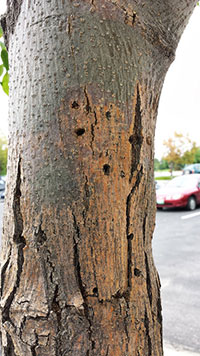
Figure 1: External appearance of trunk, with exit holes, typical of lilac/ash borer infestation. Photograph by Micaela Truslove. |

Figure 2: Larva of the lilac/ash borer. Photograph by David Cappaert, Michigan State University. |
The wood borers and bark beetles can be particularly difficult to identify since there is little evidence of their activity on the surface of the plant. Also, there is some overlap in the injuries produced by the different wood boring insects. Interest in these insects has greatly increased since the 2013 discovery of a new wood borer, the emerald ash borer, in Boulder County. With the addition of this new species there are now over a half dozen insects that may be found tunneling into trunks and branches of ash trees growing in Colorado: lilac/ash borer, flatheaded appletree borer, emerald ash borer, redheaded ash borer, banded ash borer, pigeon tremex, ash bark beetles (2-3 species) and ambrosia beetles.
Major Wood Borers of Ash
Lilac/ash borer
The lilac/ash borer (Podosesia syringae) is a native insect to North America and the most commonly encountered wood borer found in ash throughout Colorado. It is a type of moth in the “clearwing borer” family Sesiidae, and the adults superficially resemble a paper wasp.
Larvae of lilac/ash borer are cream colored with a dark head and can be distinguished from the other wood borers by a five pairs of short prolegs on the underside of abdomen, each tipped with a series of small hooks (crochets). Other wood borers in ash do not have prolegs.
The larvae concentrate feeding in the lower trunk, particularly near the base of the tree, but tunneling may extend into the lower scaffold limbs and a bit above. Initial feeding is restricted to the production of gouging wounds under the bark, but extensive tunneling in the trunk may be produced by older larvae. Lilac/ash borers can produce a more generalized riddling of the trunk than do the other borers associated with ash. External symptoms of injury may include irregularly swollen areas of the trunk and lower branches, and increased production of small branches on the trunk (epicormic branching). On occasion, tunneling larvae may expel some sawdust-like frass from the trunk. The sawdust is of granular consistency and may collect around these openings.
Lilac/ash borer larvae complete development in late winter and early spring. In preparation for pupation, the larvae migrate to the outside area of the trunk just below the bark where they excavate a chamber that is covered by a paper-thin bark flap. The insect then transforms into the pupa within this chamber. After further transformation to the adult form, the wasp-like adults emerge from trees during warm days in spring when temperatures exceed about 60oF. In the course of emerging from the trees, the adults will often pull the pupal skin through the emergence hole so that it partially extrudes from the trunk. The exit hole made by this insect is irregularly round and about 6mm in diameter. Adults of the lilac/ash borer do not feed and live only a couple of weeks. Lilac/ash borer is further discussed in CSU Extension Fact Sheet 5.614, Lilac/Ash Borer: A Common Wood Borer of Colorado’s Shade Trees.
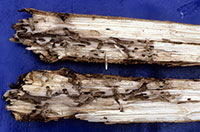
Figure 3: Damage produced by tunneling of lilac /ash borer at the base of an ash tree. |

Figure 4: Pupal skin of lilac/ash borer extruding from the trunk after the adult emerged. |
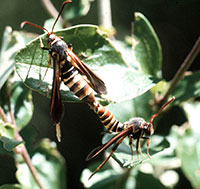
Figure 5: Mating pair of lilac/ash borers. |
Emerald ash borer
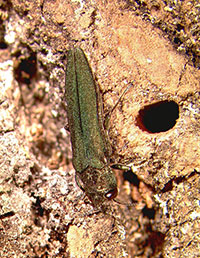
Figure 6: Adult emerald ash borer next to D-shaped exit hole. Photograph by David Shetlar, The Ohio State University. |
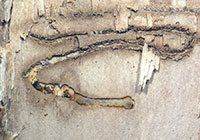
Figure 7: Emerald ash borer larva in tunnel. Photograph by David Shetlar, The Ohio State University. |
The emerald ash borer (Agrilus planipennis) is an insect introduced to North America and is native to Asia. It is a type of beetle in the “flatheaded borer” (larval name) or “metallic wood borer” (adult name) family Buprestidae.
The adult emerald ash borer is a bright, metallic green colored beetle, about 10 to 13mm long. They emerge from trees during May and June, cutting their way through the bark. The D-shaped exit wound created when the insect emerges reflects the body shape of the beetle in cross section. (The back of the beetle is flat; the underside convex.) The diameter of the D-shaped exit hole is about 3mm.
Upon emergence, the adults move into the canopy of ash trees and will chew on leaves over a period of a few weeks as they mature. After mating and having matured some eggs, the females will begin to lay these eggs singly on the surface of the bark of ash trees in protected crevices. The eggs are small, (approximately 1mm) and cream colored when first laid, later darkening to brown. During early stages of infestation by emerald ash borer, most of the egg laying is concentrated on branches in the upper crown of the tree, generally on the south to southwest side. Protected areas near branch crotches appear to be a favored site of egg laying. Early stage infestations are concentrated in the upper crown of the tree. This, coupled with the small size of the exit holes, makes early detection extremely difficult. As the infestation progresses, the tree is more extensively colonized, and egg laying will occur on all areas of the trunk and limbs. At this stage, emerald ash borer larvae can be found in twigs as small as 13mm in diameter. In end stages of an emerald ash borer infestation, the trunk is very heavily colonized and exit holes are visible on lower portions of the trunk.
Upon egg hatch, the newly emerged larvae tunnel into the trunk or limbs. Larvae of emerald ash borer are legless, pale colored and have an elongate, somewhat flattened body. The jaws are dark and the area immediately behind the head is slightly broadened and flat. Emerald ash borer larvae primarily feed in the cambium area just under the bark, although they may be found below the cambium in the sapwood when preparing to pupate. Feeding tunnels have a meandering S-shaped form, gradually increasing in diameter as the insects grow. A very fine sawdust-like excrement (frass) is produced as they feed, which is tightly packed in the tunnels; emerald ash borer does not expel this material from the trunk like lilac/ash borer.

Figure 8: Emerald ash borer larva. Photograph by David Shetlar, The Ohio State University. |
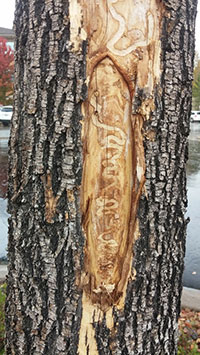
Figure 9: Old injury produced by emerald ash borer. The bark had cracked open over the wounded area. Photograph by Micaela Truslove. |
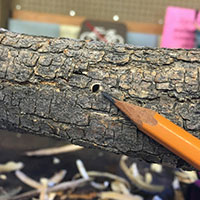
Figure 10: D-shaped exit hole produced by emerald ash borer. Photograph by Micaela Truslove. |
As emerald ash borer infestations progress, a gradual thinning of the crown is one of the more easily observed external symptoms, although there are many other causes that commonly can produce some dieback and crown thinning in ash in Colorado (e.g., effects of drought, abrupt severe freezing events, bark beetles.) Bark will sometimes split over areas of larval tunneling on branches and the damage produced by tunneling may cause sucker production (epicormic growth) near larval tunneling sites. In late summer, a slight off-color yellowing of foliage may also indicate possible infestation by emerald ash borer.
Note on Emerald Ash Borer Look-alikes. The adult emerald ash borer is quite a distinctive insect, but there are some other beetles that have fairly similar appearance and/or have metallic greenish coloration. These are covered in the publication Emerald Ash Borer and Colorado Insects of Similar Appearance.
Minor Wood Borers of Ash
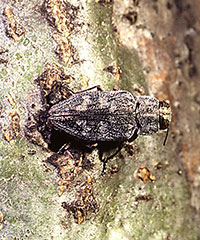
Figure 11: Adult of the flatheaded appletree borer. Photograph by David Shetlar, The Ohio State University. |
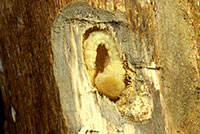
Figure 12: Larva of the flatheaded appletree borer. Photograph by David Shetlar, The Ohio State University. |
Flatheaded appletree borer
The flatheaded appletree borer (Chrysobothris femorata) is an insect native to North America that develops in a large number of hardwood trees in Colorado including oak, maple, ash, and apple. Like emerald ash borer, it is in the beetle family Buprestidae, and thus is a type of flatheaded borer in the larval stage, and a metallic wood borer as an adult.
Among all the injuries produced by various wood boring insects in ash, those produced by flatheaded appletree borer are most similar to what one will see with emerald ash borer. Adults of the flatheaded appletree borer similarly emerge from trees primarily during May and June, cutting their way through the bark and producing a D-shaped exit hole. However, flatheaded appletree borer is a larger insect than emerald ash borer with a somewhat broader body form. The D-shaped exit hole it produces is slightly larger and wider than what an emerald ash borer will produce.
Unlike emerald ash borer, flatheaded appletree borer is a minor pest of ash, incapable of doing significant damage to living ash trees. Infestations are limited to recently dead, dying or severely stressed plants, and feeding often is limited to limbs rather than the trunk. Most often flatheaded appletree borer will be found in ash branches that were previously damaged from drought or freeze injuries, or that have recently died.
Some general aspects of life history and appearance are similar to those of emerald ash borer. Larvae of the flatheaded appletree borer are cream colored, have a small head with pronounced dark jaws, feature a broadly flattened area behind the head, and have a very elongate and somewhat flattened body. The broadened area behind the head is much wider in the flatheaded appletree borer than with emerald ash borer and is more rounded as opposed to angular. The larvae also grow larger than those of emerald ash borer.
Adult emergence periods are generally similar and both species lay eggs on the bark. Larvae of flatheaded appletree borer largely limit tunneling to the area just under the bark and the tunnels are packed with the fine, sawdust-like frass they excrete. However, since flatheaded apple tree borer usually occurs in dead/dying limbs, the frass is often drier and fluffier than would be produced by emerald ash borer. Tunnels produced by flatheaded appletree borer are more meandering than the S-shaped galleries created by emerald ash borer.
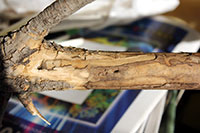
Figure 13: Tunneling injury produced by flatheaded appletree borer in an ash branch. |
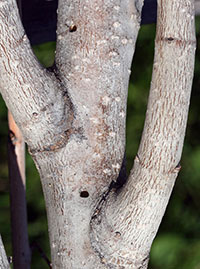
Figure 14: D-shaped exit hole produced by flatheaded appletree borer. |
Redheaded Ash Borer
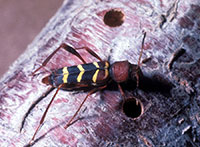
Figure 15: Redheaded ash borer adult next to rounded exit holes it produces. Photograph by Howard Ensign Evans. |
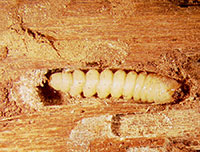
Figure 16: Larva of redheaded ash borer, a type of roundheaded borer. Photograph by David Shetlar, The Ohio State University. |
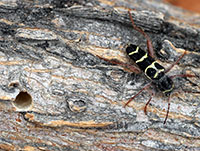
Figure 17: Adult and exit hole of the banded ash borer. |
The redheaded ash borer (Neoclytus acuminatus) is a native insect to North America. It is a type of beetle in the “roundheaded borer” (larval name) or “longhorned beetle” (adult name) family Cerambycidae. The redheaded ash borer develops in a wide range of hardwood trees and, despite its common name, is rather infrequently found in ash. Fruit trees are more common hosts of this insect in Colorado. Most often the adults are encountered when they emerge from firewood.
Adults of this insect emerge from trees from June through August, cutting their way through the bark. The adults are distinctive, with red and brown markings and rather long legs. Size of the adults can be quite variable, ranging from about 5mm to as long as 17mm and is related to the growing conditions that existed during larval development. The exit holes produced in the bark when the adults chew their way out of plants during emergence are slightly oval and can range from 4-6mm, depending on the size of the adult.
Upon egg hatch, the newly emerged larvae tunnel into the trunks or limbs. Larvae of the redheaded ash borer are cream colored with a small head marked with pronounced dark jaws. The general body form is somewhat cylindrical. They can be distinguished from larvae of the lilac/ash borer in that they lack the small prolegs on the underside of the abdomen. Feeding initially occurs in the outer sapwood but larvae may tunnel extensively throughout the trunk. Tunnels that they produce are oval and packed with fine, granular sawdust-like frass.
Banded ash borer
The banded ash borer (Neoclytus caprea) is a close relative to the redheaded ash borer and also is native to North America. Similarly, it restricts feeding to trees that are in serious decline or have recently died. Ash is perhaps the most common tree within which banded ash borer develops, but oaks, elm and linden are also reported hosts.
Larvae of banded ash borer are indistinguishable from those of the redheaded ash borer. The damage patterns (tunneling pattern, oval-round exit hole) produced are also similar.
Pigeon tremex
The pigeon tremex (Tremex columba) is a native insect to North America. It is a type of wood boring wasp in the horntail family Siricidae. The pigeon tremex develops in a wide range of hardwood trees that are in advanced stages of decline, including elm, maple, and ash.
Adults of this insect emerge from trees in midsummer. The females, which are large, brown cylindrical bodied wasps can sometimes be observed as they search the bark of host plants. Periodically females will drill intro trees with a long ovipositor and, when they find a suitable egg-laying site, will deposit eggs into the wood. Pigeon tremex also introduces white rot fungi into the tree when laying eggs, which will produce decay that softens the wood and is critical for the later development of the larvae of pigeon tremex.
Feeding occurs deeply into the wood, producing riddling that may extend into the center of the plant. Feeding tunnels are round in cross section. Larvae of the pigeon tremex are cream colored with a cylindrical body. The head is large compared to the other wood borers; however the head is light-colored except for the jaws.
Pigeon tremex is restricted to ash trees that are in advanced decline and it is not a primary pest of ash. Adults produce round, smoothly cut holes when exiting through the bark. Pigeon tremex and one of its primary natural enemies is discussed in Extension Fact Sheet 5.604, Pigeon Tremex and the Giant Ichneumon Wasp.
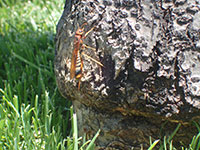
Figure 18: Pigeon tremex laying eggs at the base of an ash tree damaged by lawn mowing. |
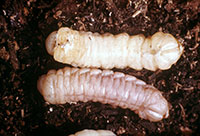
Figure 19: Larvae of pigeon tremex. |
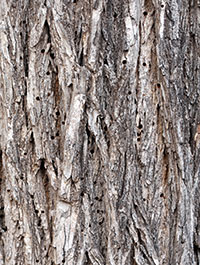
Figure 20: Circular exit holes are made when pigeon tremex emerges from trees. |
Bark Beetles
Ash bark beetles
Three species of ash bark beetles (Hylesinus species) are associated with ash in Colorado. All are quite small (ca 3mm long), rather stout-bodied beetles of mottled grays and/or browns. They may be found developing in limbs that range from finger-diameter branches to the main trunk. Infestations often are limited to individual branches or even parts of branches that may be overshaded, storm damaged, killed by drought, injured by Cytospora infections or otherwise weakened. Rarely do ash bark beetles attack healthy portions of the tree. Ash bark beetles are a common contributor to limb dieback and crown thinning in ash trees that grow in Colorado.
Adult bark beetles cut chambers (egg galleries) just under the bark into which eggs are laid. Egg galleries run across the grain perpendicular to the branch, and often have many branching “arms” leading away from the central gallery. Small “ventilation holes” that are the size of a pin head may perforate the bark above the egg galleries. The tunnels are almost invariably colonized by fungi that stain the wood a rich brown color around the tunnels and sometimes sap may ooze from tunneling wounds in twigs.
Dozens of eggs may be laid in the egg galleries and when the eggs hatch, the larvae feed under the bark, creating tunnels that run more or less perpendicular to the egg gallery. Ash bark beetle larvae are tiny (less than 3mm when full-size), pale-colored, legless grubs. When full-grown they pupate at the end of the gallery they produced. Later, the adult stage chews its way through the bark, creating a round exit hole that is not much wider than a pencil lead. Usually there will be dozens, sometimes hundreds, of these exit holes in close proximity to each other.
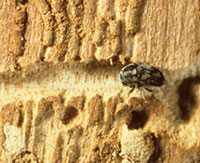
Figure 21: Adult of an ash bark beetle exposed within it egg gallery. Photograph by David Leatherman. |
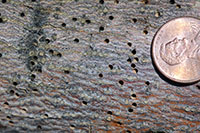
Figure 22: Exit holes produced by ash bark beetles. |
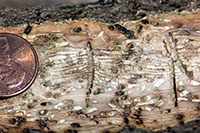
Figure 23: Tunneling produced by ash bark beetles in an ash branch. |
Ambrosia Beetles
Ambrosia beetles are a type of bark beetle that occurs in recently killed wood or in wood that is in very advanced decline. However, the tunneling pattern they produce differs from that produced by “normal” bark beetles; rather than creating egg galleries and larval tunnels that run under the bark, ambrosia beetles make a vertical tunnel that extends into the hardwood. On the wood surface this appears as a tiny round hole, perhaps even less than 2mm in diameter, which is usually surrounded by an area of discoloration.
Within the vertical tunnel the adult beetle expands areas where it will rear young. In the case of the common ambrosia beetle Xyleborinus saxesenii, a cave-like area is carved out. The sawdust from tunneling is expelled from the tunnel, and in some cases the packed, dried sawdust may appear as small “toothpicks” that extend from the tunnel entrance.
All ambrosia beetles are associated with fungi known as “ambrosia fungi” that are carried into the wood by the adult beetle, and that then grow within the tunnels produced by the adult. Some pockets of wood staining are produced by these fungal infections. Ambrosia beetle larvae do not further extend the tunnels but instead develop by feeding on the ambrosia fungi. When mature, the new adult beetles will exit from the same hole produced by the parent beetle.
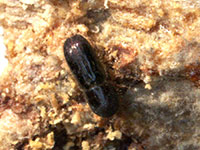
Figure 24: Adult of the ambrosia beetle Xyleborinus saxesenii. Photograph by Pests and Diseases Images Collection/Bugwood.org |
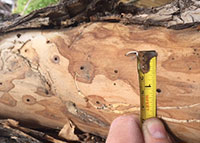
Figure 25: Pinhole tunneling wounds made into the interior of a branch by the ambrosia beetle Xyleborinus saxesenii. The dark areas are due to fungal infection. Photograph by Mike Meese. |
*Colorado State University Extension entomologist and professor, bioagricultural sciences and pest management. 10/99. Revised 1/19.
Colorado State University, U.S. Department of Agriculture, and Colorado counties cooperating. Extension programs are available to all without discrimination. No endorsement of products mentioned is intended nor is criticism implied of products not mentioned.
Go to top of this page.





